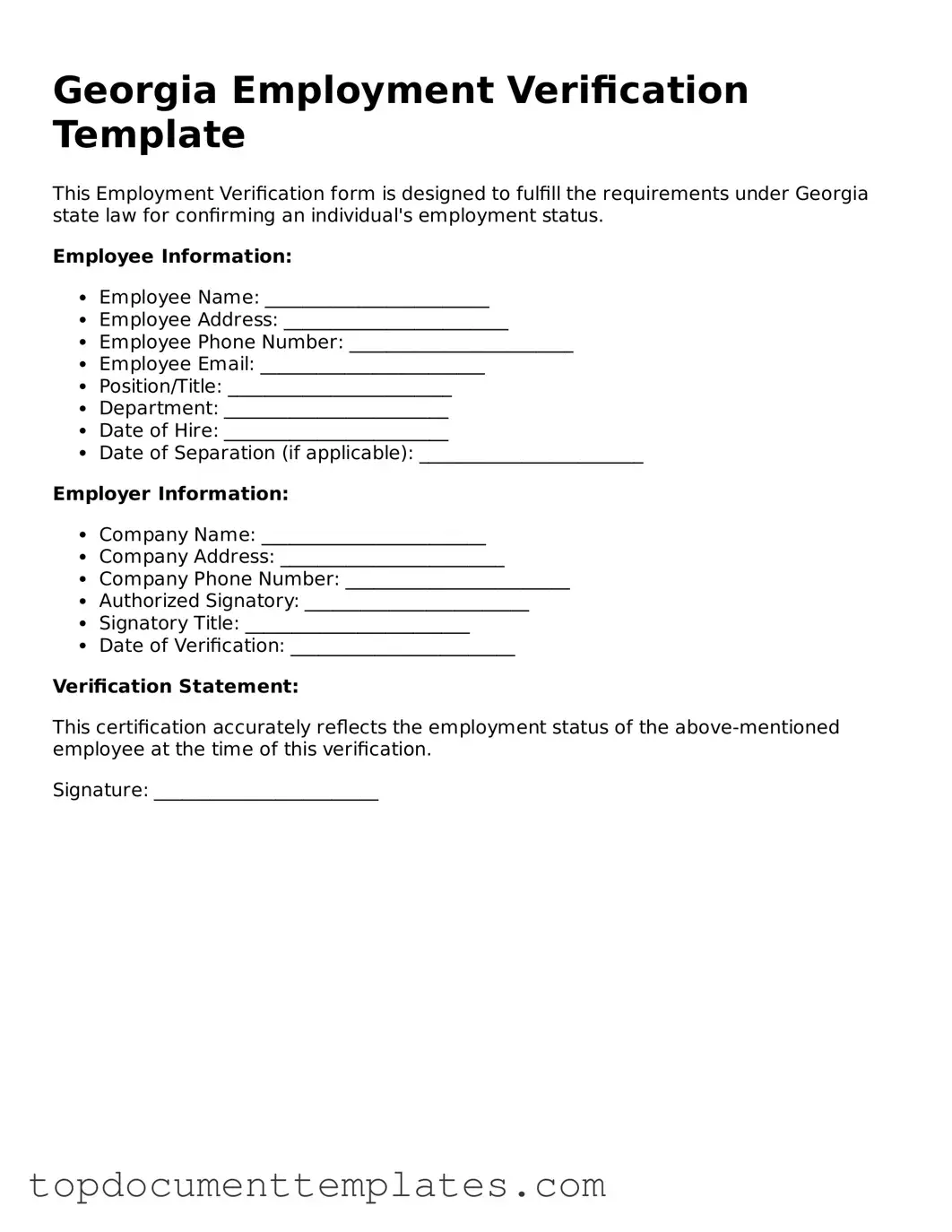Valid Employment Verification Form for Georgia State
The Georgia Employment Verification form is a crucial document used to confirm an individual's employment status and details. This form serves as a reliable source of information for employers, landlords, and other entities that require proof of employment. To ensure accuracy and compliance, it is essential to fill out the form correctly; click the button below to get started.
Open This Form
